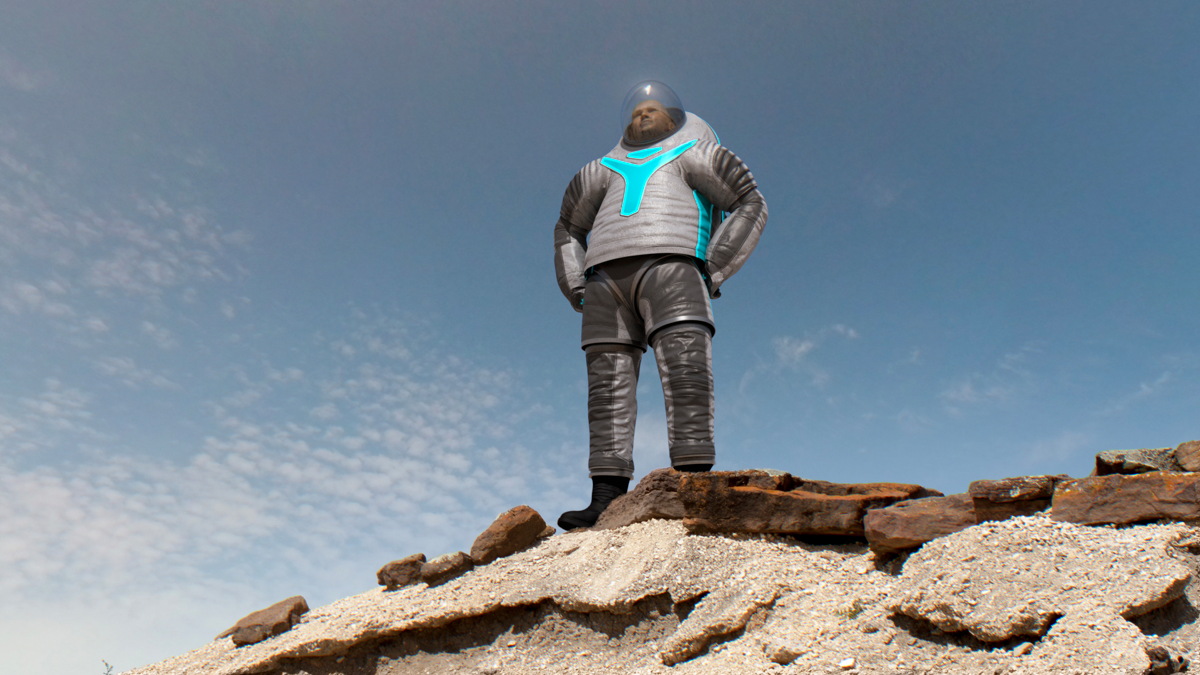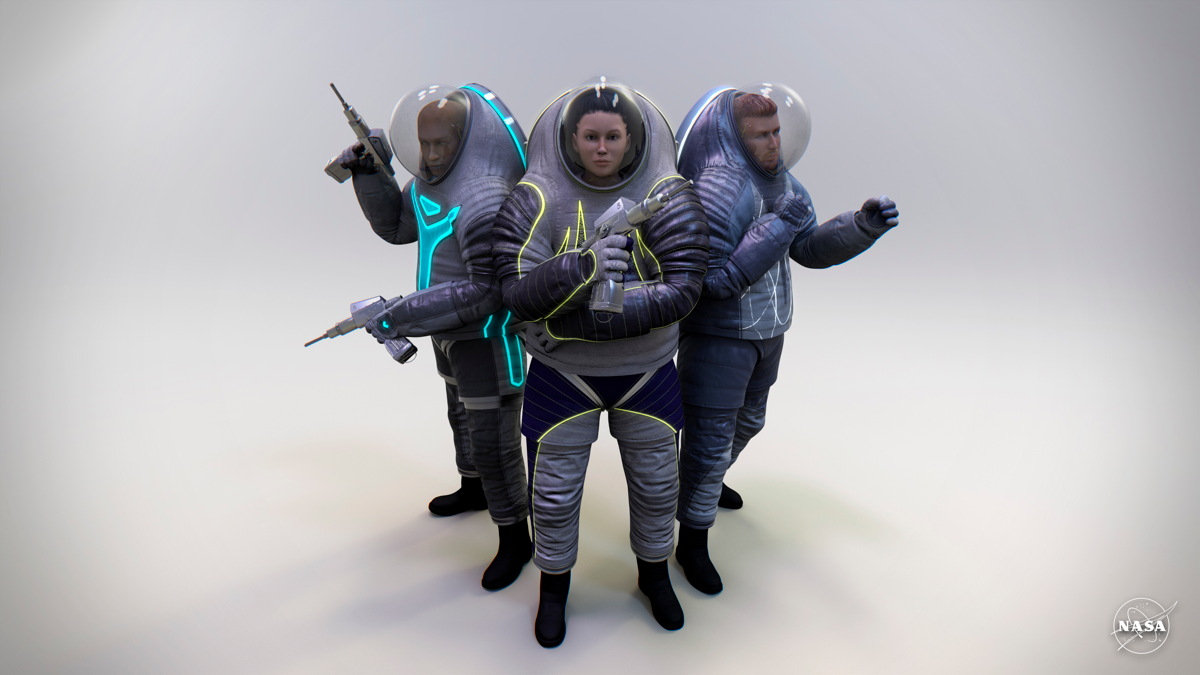
NASA's next-generation spacesuit is really coming together, with a little help from the public.
The space agency revealed today (April 30) the "Tron"-like new look of its prototype Z-2 spacesuit, which sports an external "cover layer" chosen by public vote.
The cover layer option dubbed "Technology" won the spacesuit design challenge with 147,354 votes, or just over 63 percent of the total ballots cast, NASA officials said. The other two choices — "Biomimicry" and "Trends in Society" — received 53,057 and 33,020 votes, respectively.

The newly selected cover layer now becomes part of the Z-2, which should be fully constructed and ready to be tested by November, officials said.

That extensive testing campaign won't prepare the Z-2 for spaceflight, however. The Z-series spacesuit line is still in the prototype phase, seeking to advance and develop technologies that will allow astronauts to amble about on the surface of Mars someday. So whatever NASA learns about the Z-2 will inform the design of the next iteration, the Z-3.
The Z-2, for example, features some key improvements over the Z-1 spacesuit, which was named one of Time Magazine's best inventions in 2012. The Z-2's hard upper torso makes it more durable, officials said, and the suit uses materials designed to function well in the vacuum of space.
The newly selected cover layer — which sports electroluminescent wiring and a stark, futuristic look — will provide services beyond mere aesthetics, officials said.
Get the Space.com Newsletter
Breaking space news, the latest updates on rocket launches, skywatching events and more!
"The cover layer of a non-flight suit still performs an important function in ground-based testing. The cover protects the lower layers and technical details from abrasion and snags during testing," NASA officials wrote in a press release today.
"The cover layer on flight suits used for spacewalks performs many other important functions like protecting the spacewalker from micrometeorite strikes, the extreme temperatures in space and the harmful effects of radiation," they added. "These requirements drive selection of specific high-performance materials and design details that aren’t necessary at this stage in a prototype suit."
Follow Mike Wall on Twitter @michaeldwall and Google+. Follow us @Spacedotcom, Facebook or Google+. Originally published on Space.com.
Join our Space Forums to keep talking space on the latest missions, night sky and more! And if you have a news tip, correction or comment, let us know at: community@space.com.

Michael Wall is a Senior Space Writer with Space.com and joined the team in 2010. He primarily covers exoplanets, spaceflight and military space, but has been known to dabble in the space art beat. His book about the search for alien life, "Out There," was published on Nov. 13, 2018. Before becoming a science writer, Michael worked as a herpetologist and wildlife biologist. He has a Ph.D. in evolutionary biology from the University of Sydney, Australia, a bachelor's degree from the University of Arizona, and a graduate certificate in science writing from the University of California, Santa Cruz. To find out what his latest project is, you can follow Michael on Twitter.
